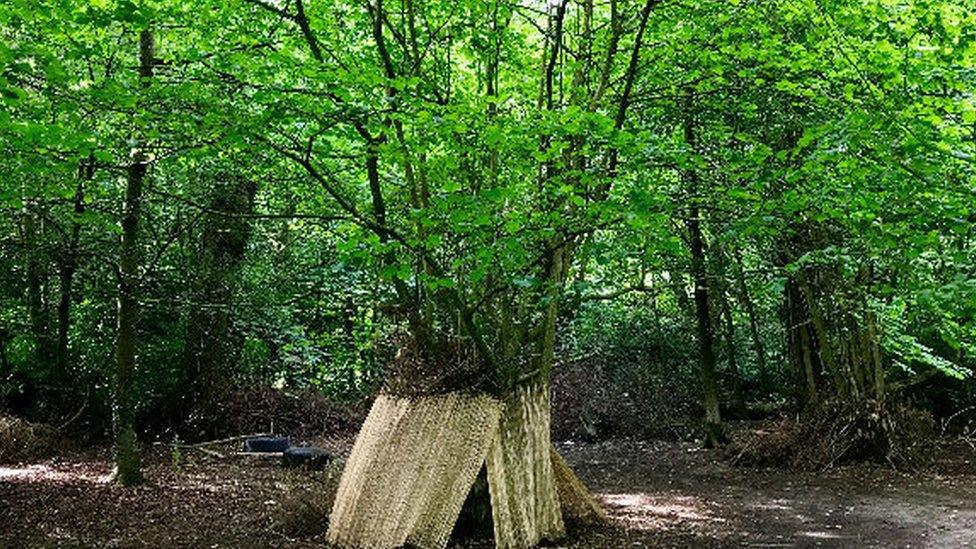Tree of the Year 2019: Oaks and sycamore in running for award
- Published
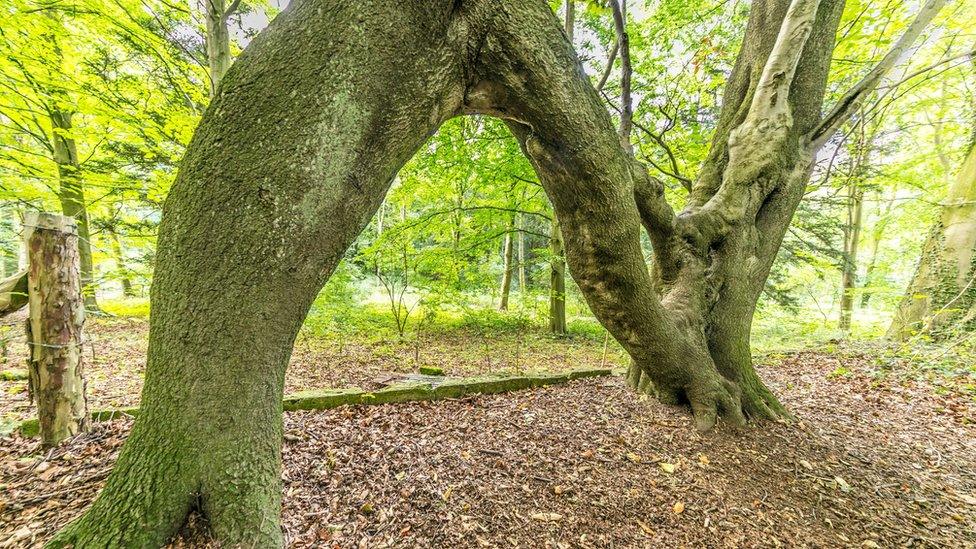
Nellie's Tree, in Aberford, West Yorkshire, was the England and UK Tree of the Year in 2018
Six oak trees, a sycamore and a twisted Scots pine are in the running to be crowned England's Tree of the Year.
Ten trees have been shortlisted by the Woodland Trust, with the winner to be chosen by a public vote, external.
Contenders include an oak in Liverpool believed to date to the Norman conquest of 1066 and a tree in Richmond Park, London, that has continued to grow despite being felled by a storm.
The winner could compete in the 2020 European Tree of the Year award.
Judges will select the UK representative from the winner of national contests in England, Scotland, Wales and Northern Ireland.
'Under threat'
Each winner will also be awarded £1,000 to be spent on improving the tree's health, signage or a community celebration.
Adam Cormack, head of campaigning at the Woodland Trust, said the aim was to protect trees as many are "constantly under threat of felling due to inappropriate developments".
He said: "We have a fantastic number of ancient and veteran trees and many notable urban trees."
Voting closes on 27 September.
The 10 shortlisted trees are:
Allerton Oak, Liverpool
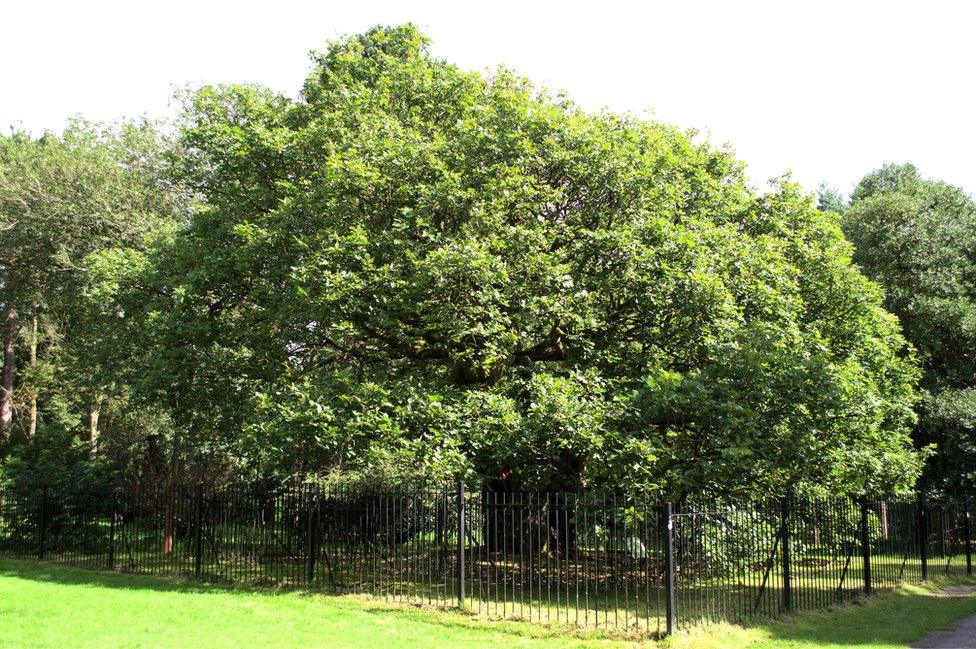
Standing in Calderstones Park in Allerton, which is mentioned in William the Conqueror's Domesday Book of 1086, it is possible this ancient tree was already growing by then, the Woodland Trust said.
The local court is said to have met under its branches in medieval times as they had no courthouse.
Dragon Tree, Brighstone, Isle of Wight
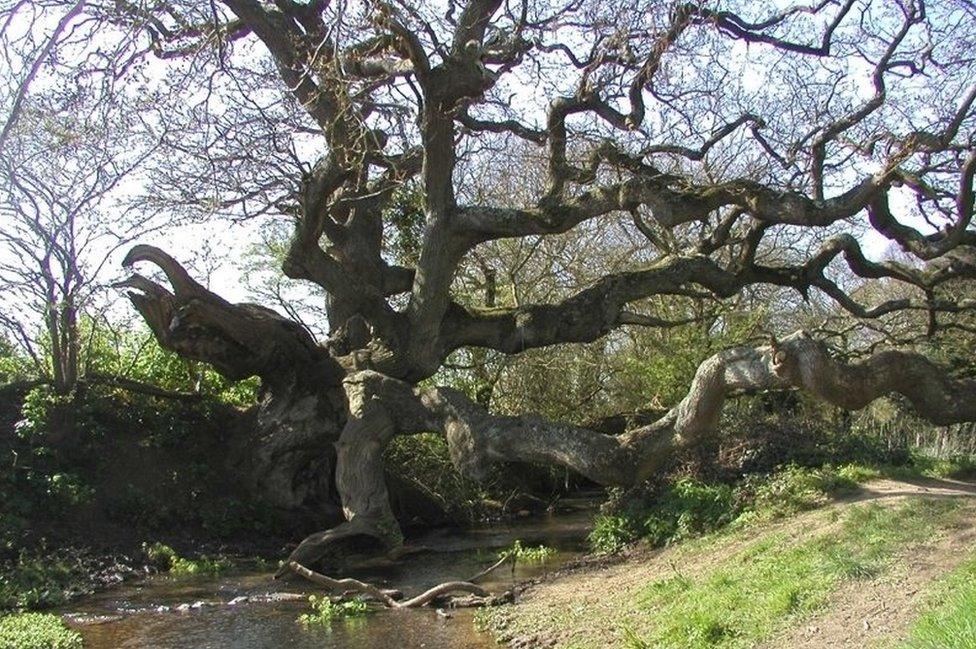
This oak has huge snaking boughs, one of which forms a bridge over the brook below.
It is thought it took on its unique shape after it was blown down in a storm and managed to re-root, though legend suggests it was a dragon slain by a knight before turning to wood.
Kingley Vale Great Yew, Chichester
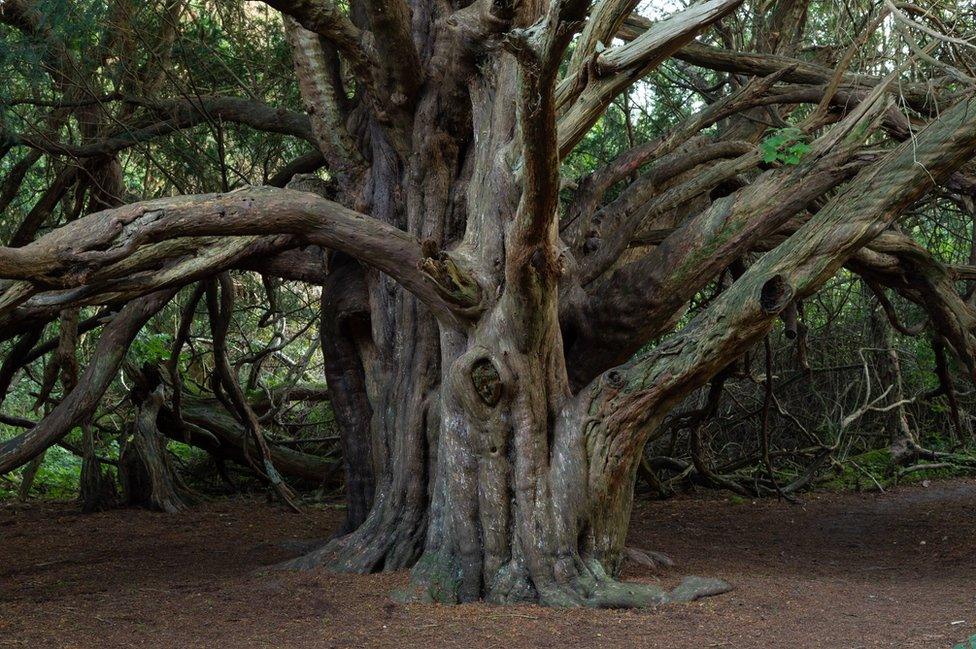
Yew trees have grown on the South Downs for thousands of years and are said to be some of the oldest living things in the UK.
This specimen has large arching boughs which form a canopy.
Addison's Oak, Bristol
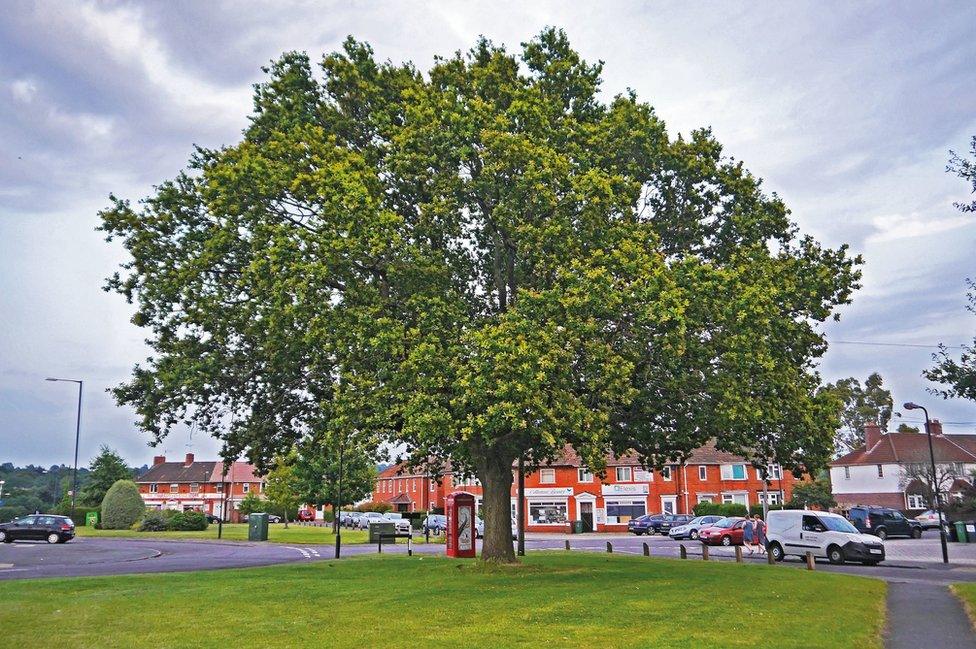
This tree was planted to commemorate the launch of Bristol's city-wide public housing scheme by Dr Christopher Addison MP, who was responsible for the 1919 Housing and Town Planning Act which led to the first council houses to be built to provide "homes fit for heroes" returning from World War One.
You may also be interested in:
Fallen Tree, Richmond Park, London

Blown over in a storm, this oak clung on to life with its last remaining roots and has flourished in an unusual position.
All of its branches grow from one side of the trunk, each reaching up like a small tree, and its bark has been worn smooth by children using it as a climbing frame over the years.
London Plane, Bryanston, Dorset
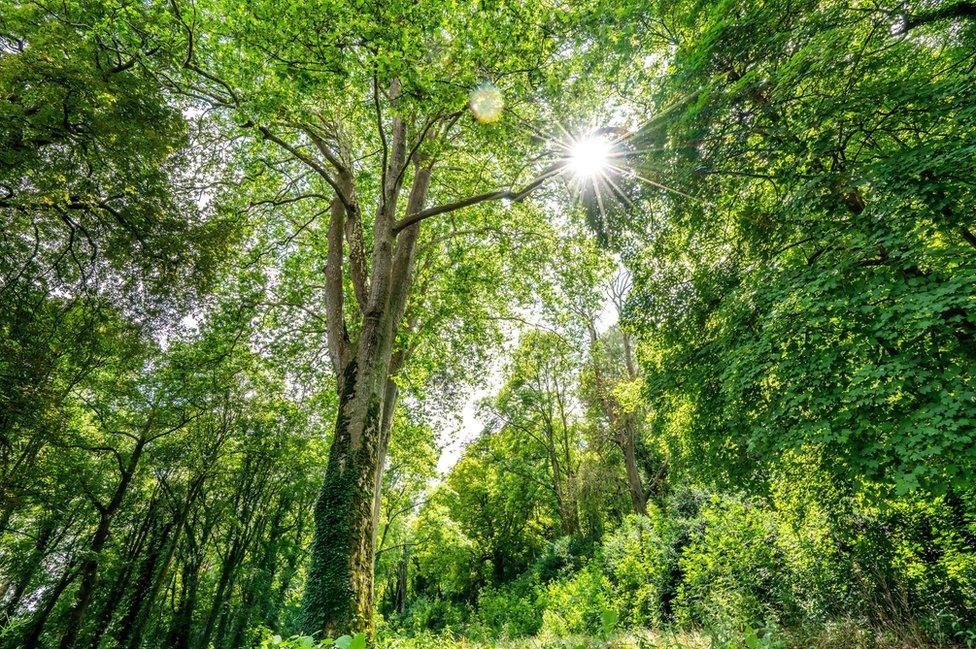
The central of three trees at Bryanston School, this specimen stands nearly 164ft (50m) tall, just a little shorter than Nelson's Column, making it the tallest broadleaf tree in the UK and one of the tallest in Europe.
The tree's height was confirmed in 2015 when school pupils - with the help of professional climbing equipment - scaled it to measure it.
Twisted Scots pine, Thetford
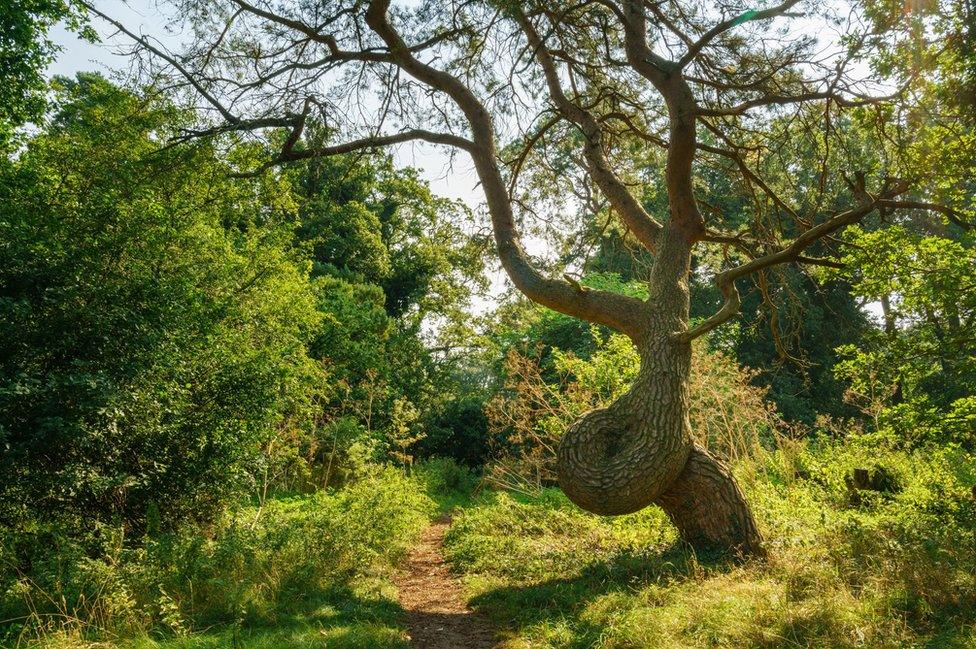
This tree in a small area of woodland south of Thetford has bent in a loop as it has grown.
It is thought it grew that way entirely naturally, bent down by wind or snow and then reaching towards the light once the pressure was lifted.
North Circular Cork Oak, London
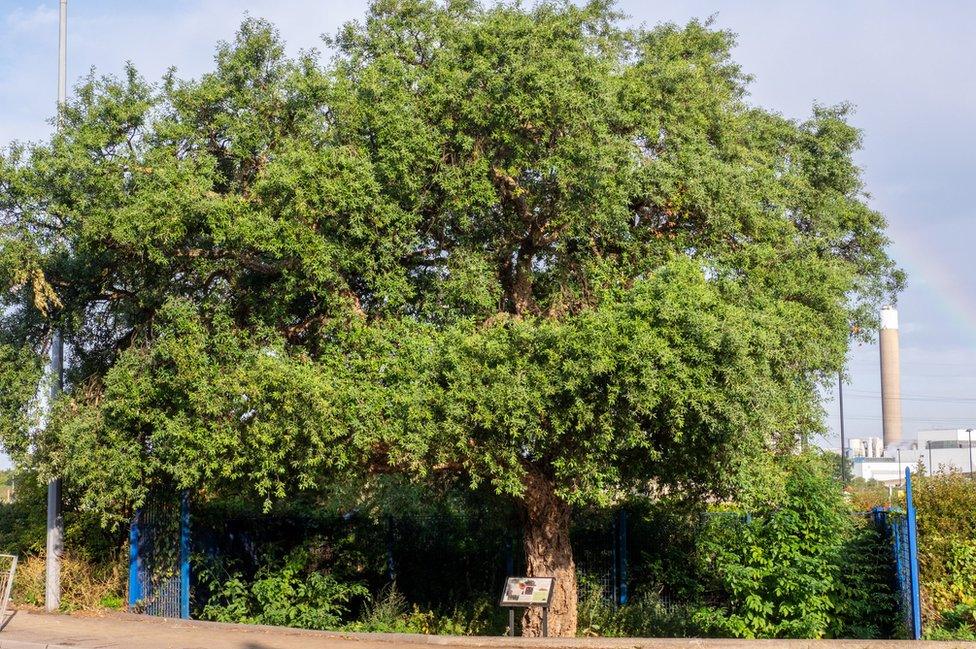
The last surviving cork oak from a plantation planted by the Cork Manufacturing Company more than a century ago, this tree flourishes at a major junction on London's North Circular and, according to the Woodland Trust, shows how "nature and trees can thrive even in adverse urban environments".
The Colchester Castle Sycamore, Colchester
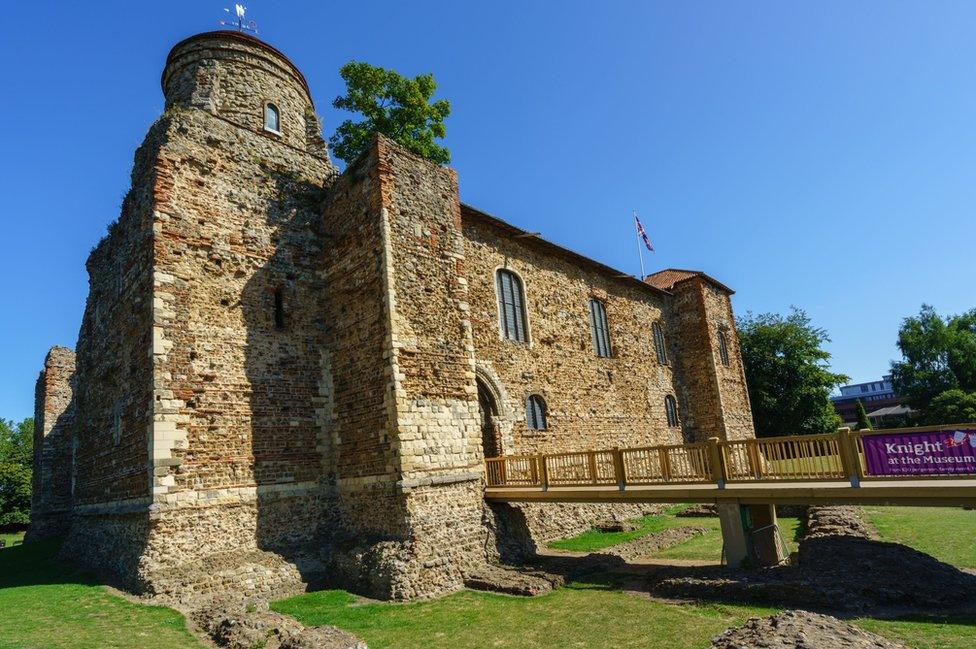
This sycamore growing on top of Colchester Castle's south-east tower was planted by the mayor's daughter in 1815 to commemorate the defeat of Napoleon at Waterloo. It had to be removed in 1985 for wall repairs but it survived and was put back into its original position in 1987.
The Drive Oak, Gloucester
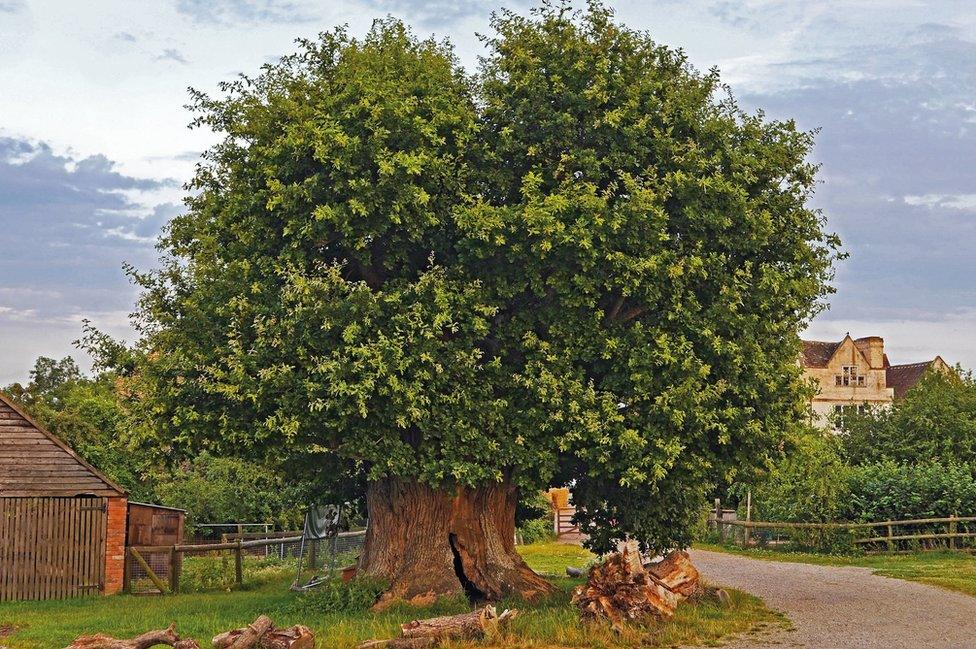
This tree has guarded the entrance to Wick Court farm for hundreds of years and may have been there when Elizabeth I came from Berkeley Castle, having been reprimanded for killing too many stags.
Now children come to stay from inner-city primary schools, and study the oak as part of a bird survey.
- Published30 October 2018
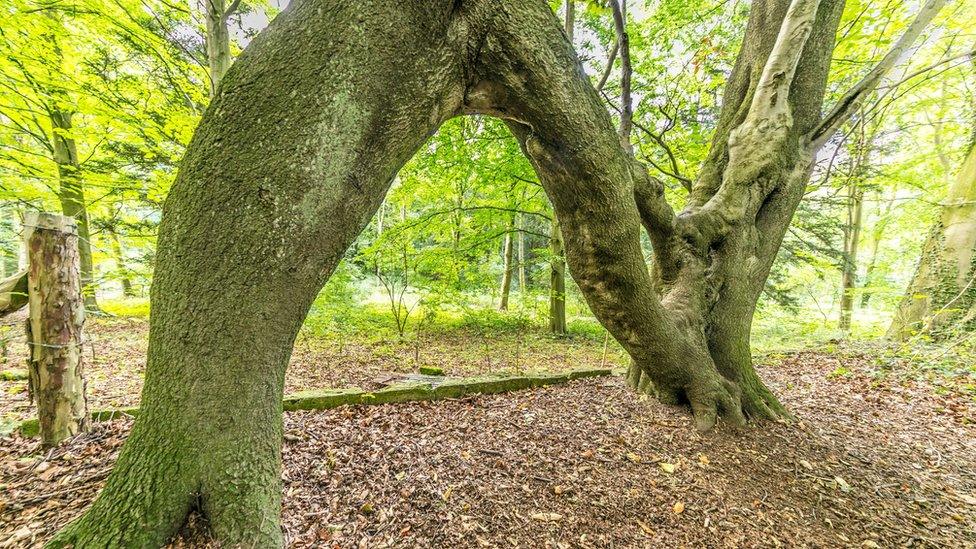
- Published11 September 2017
